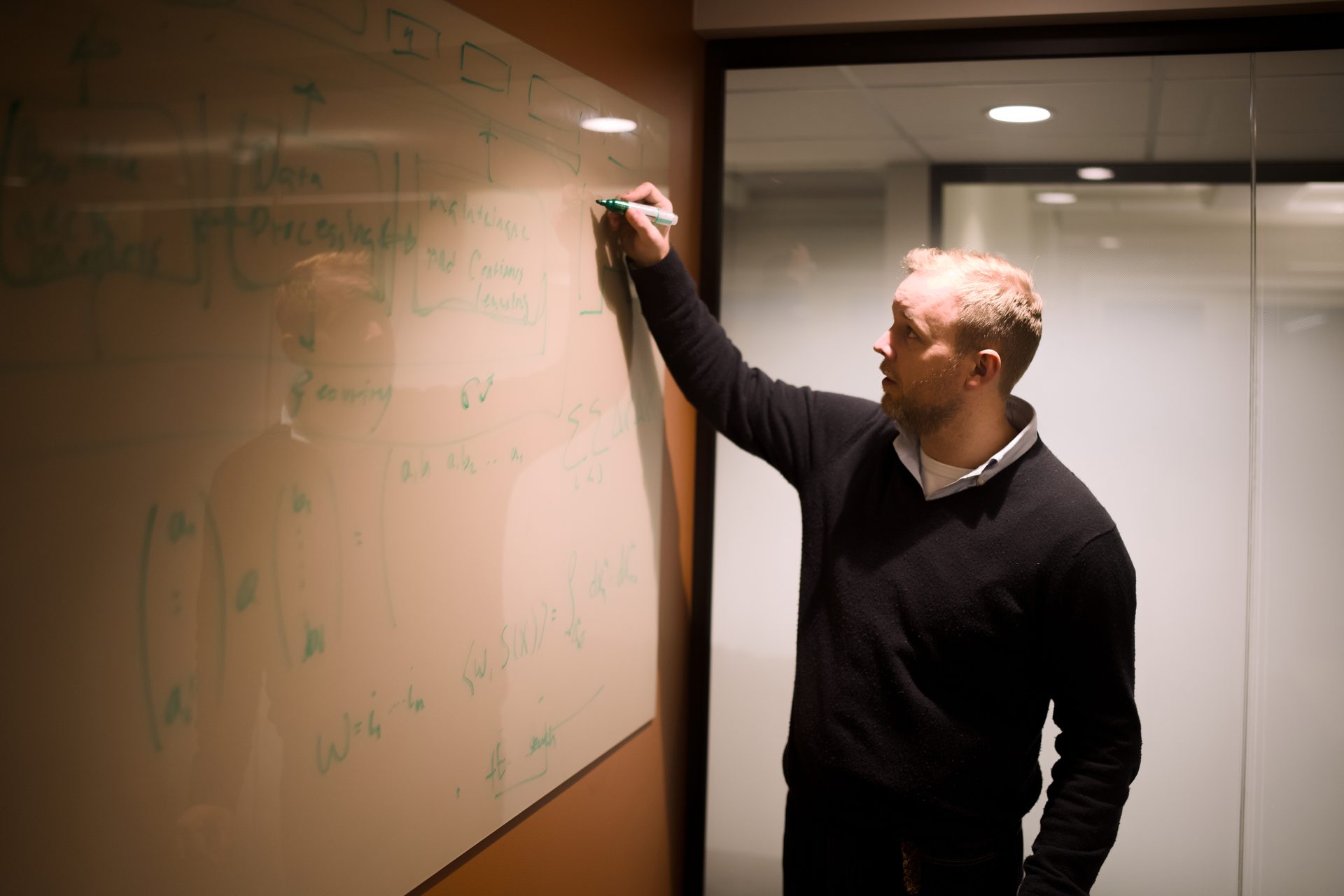
The economics of overlapping generations: a stochastic lens
October 2025
Research
Read more
Read the full preprint here:
Explore the stochastic lens
How do shifts in a country’s age mix ripple through saving, borrowing, and interest rates? And—when income is uncertain—how far would a rational person actually be willing to borrow? Our new preprint, Stochastic Analysis of Overlapping Generations Models Under Incomplete Markets, takes a familiar workhorse of macroeconomics—the overlapping-generations (OLG) model—and looks at it through the lens of forward–backward stochastic differential equations (FBSDEs). We build on a broad literature on stochastic OLG economies and offer a complementary, continuous-time formulation that makes the dynamics and the computation easier to see.
The core idea is straightforward. Each individual faces a lifetime consumption–saving problem with idiosyncratic income risk and limited opportunities to insure against it. In our framework, the “forward” equation records how a person’s state evolves—age, wealth, income—while the “backward” equation tracks how people value scarce resources over the rest of their life. Solving the two together yields optimal decisions at the individual level. Aggregating those decisions and imposing market-clearing conditions then pins down the economy’s equilibrium interest rate. This perspective lets us state clean conditions for when such an equilibrium exists and when it is unique, while keeping a tight link to observable drivers such as income risk and demographics.

A central finding is an endogenous lower bound on wealth—equivalently, a natural limit to how much rational individuals are willing to borrow. Many models impose a fixed borrowing cap to rule out unsustainable strategies; in our setup the limit is not assumed but emerges from optimal behavior and terminal-wealth considerations. Intuitively, the floor reflects the present value of expected future income, discounted at the prevailing interest rate. Because income prospects and risks differ across people and vary over time, this borrowing limit is heterogeneous and state-dependent. Even in the absence of hard external constraints, there is a level of debt beyond which taking on more becomes unattractive because it jeopardizes future solvency.
Demographics enter in a direct and intuitive way. We describe the population’s age structure as a flow of measures—think of it as a precise accounting of how many young, middle-aged, and older people there are at each point in time. That structure feeds into saving and consumption decisions, and hence into the market-clearing interest rate. When the population ages, aggregate saving typically rises relative to consumption, pushing the rate in one direction; when younger cohorts expand, the balance can shift the other way. In a steady demographic environment, the model implies a constant equilibrium rate; when the age distribution changes, so do rates.
Alongside the theory, we demonstrate a practical computational method: a neural-network algorithm that learns the optimal consumption policy in a life-cycle setting. Rather than solving a boundary-value problem with traditional partial-differential-equation solvers, we train a compact network to approximate the policy that maximizes lifetime utility under uncertainty. The inputs are simple (age, wealth, income), and the output is a consumption decision. Architectural choices ensure economically sensible behavior—for example, non-negative consumption and training penalties that discourage ending life with negative wealth. The resulting policy is smooth, generalizes across states, and illustrates how modern machine learning can complement rigorous stochastic analysis.
Taken together, the paper provides a broad analytic treatment of stochastic OLG models, an endogenous and interpretable lower bound for wealth, and a transparent demographic–interest-rate mapping, all within an FBSDE framework that scales naturally to computation.

For full details—including formal statements, proofs, and numerical illustrations — see the preprint on arXiv: The authors are: Cangxiong Chen, Sigmund Ellingsrud, Fabian N. Harang, Alfonso Irarrazabal, and Avi Mayorcas.
Check out the full paper for details:
Explore the stochastic lens
This blogpost was written with the aid of large-language AI models.
Keep reading
Double-click to select video


Unifying Risk and Belief: A Foundation for Coherent AI Decision-Making
October 2025
Research
Read more
Double-click to select video
En annen sak med en tittel som dette
September 2025
News
Read more
The economics of overlapping generations: a stochastic lens
October 2025
Research
Read more

